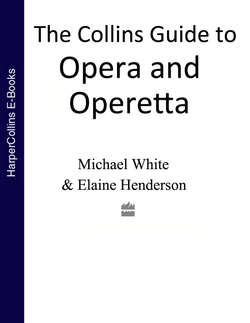Читать книгу The Collins Guide To Opera And Operetta - Michael White - Страница 63
Оглавление(1797–1848)
Anna Bolena (1830)
L’Elisir d’Amore (1832)
Lucrezia Borgia (1833)
Maria Stuarda(1834)
Lucia di Lammermoor(1835)
L’Assedio Calais (1836)
La Fille du Régiment (1839)
La Favorite (1840)
Linda di Chamounix (1842)
Don Pasquale (1843)
Enormously prolific, with some seventy operas to his name, Donizetti was born in Bergamo, built his career in Naples and moved on to triumph in Paris and Vienna as a leading exponent of the style of vocal writing known as bel canto: a style where, in performance, beauty of line and virtuosity of embellishment are paramount. At his death (from syphilis) in 1848, about a quarter of the Italian operas in regular European repertory were by him – an achievement rivalled only by his slightly older contemporary, Rossini. It wasn’t to last, and by the turn of the century most of his work had been forgotten, leaving in performance only the comedies for which he is still principally known: L’Elisir d’Amore, Don Pasquale and La Fille du Régiment. But Donizetti considered himself above all else a composer of romantic drama, and with the revival of interest in ‘display’ singing, encouraged from the middle of this century by stars like Callas and Sutherland, his serious works have resurfaced, led by Lucia di Lammermoor which is now a well-established vehicle for coloratura sopranos with a gift for pathos.
